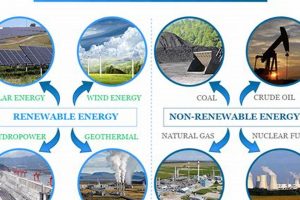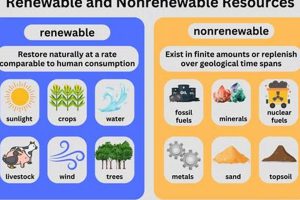
Water’s natural cycle of evaporation, condensation, and precipitation continuously replenishes the resource driving hydroelectric power generation. This cyclical nature, powered by solar energy, distinguishes it from finite resources like fossil fuels. For... Read more »

Both renewable and non-renewable energy sources share the fundamental purpose of generating power for human consumption. This power fuels various aspects of modern life, from transportation and industrial processes to heating homes... Read more »

Natural gas, composed primarily of methane, is a fossil fuel extracted from underground reservoirs. Like other fossil fuels, it forms from the decomposition of organic matter over millions of years. This lengthy... Read more »

Natural resources are categorized based on their replenishment rate. Resources that can be naturally replenished over a relatively short period, from months to decades, are considered renewable. Examples include solar energy, wind... Read more »

Nuclear power relies on the process of nuclear fission, where the nucleus of a heavy atom (typically uranium) is split, releasing a tremendous amount of energy. Uranium, the primary fuel source, is... Read more »

Solar energy, derived from the sun’s radiation, is a perpetually replenishing resource. Unlike fossil fuels, which are finite and deplete over time, the sun’s energy is effectively limitless within human timescales. This... Read more »

The categorization of atmospheric gases as perpetually replenishable or finite depends on the specific component under consideration. Oxygen, vital for most life forms, is constantly renewed through natural processes like photosynthesis. However,... Read more »

Crude oil, formed from ancient organic matter under immense pressure and heat over millions of years, is a finite resource. Its extraction and utilization are not replenished within a human timescale. For... Read more »




